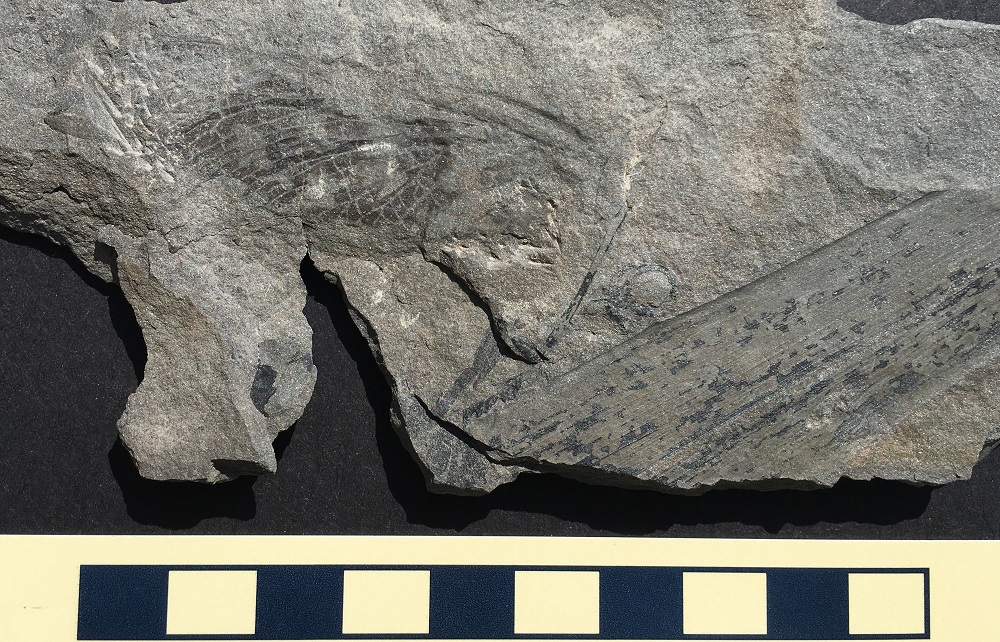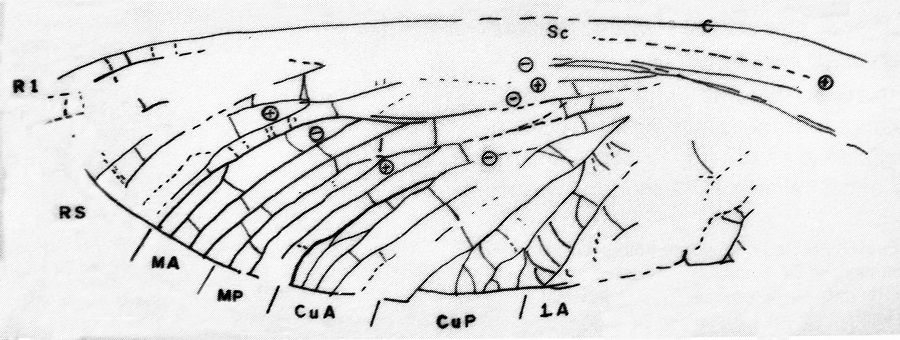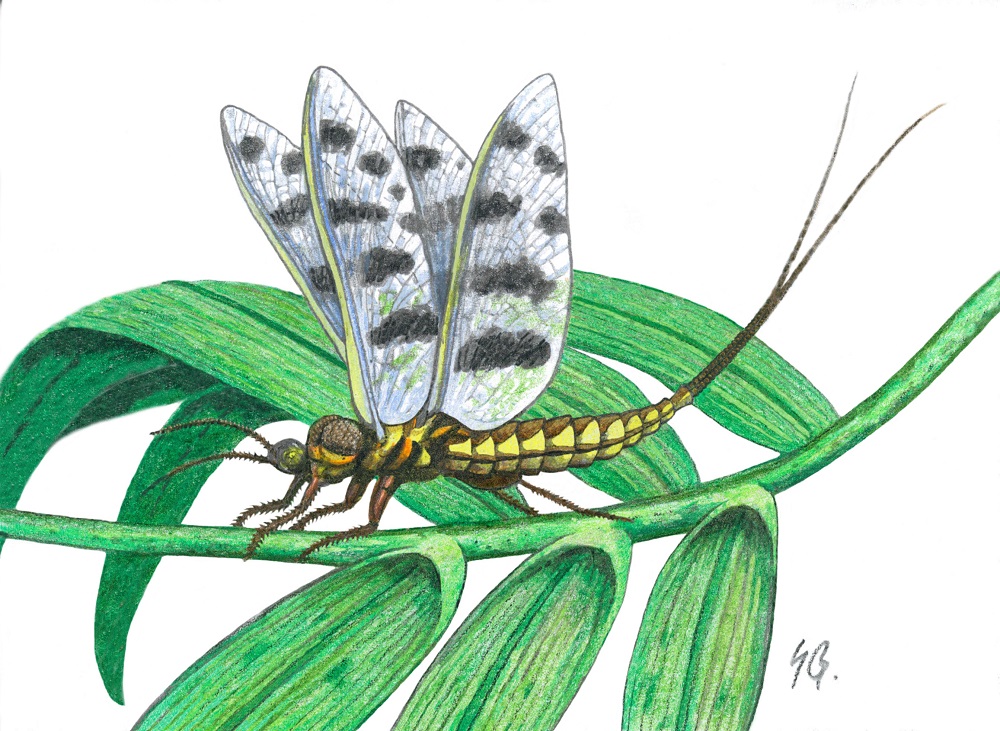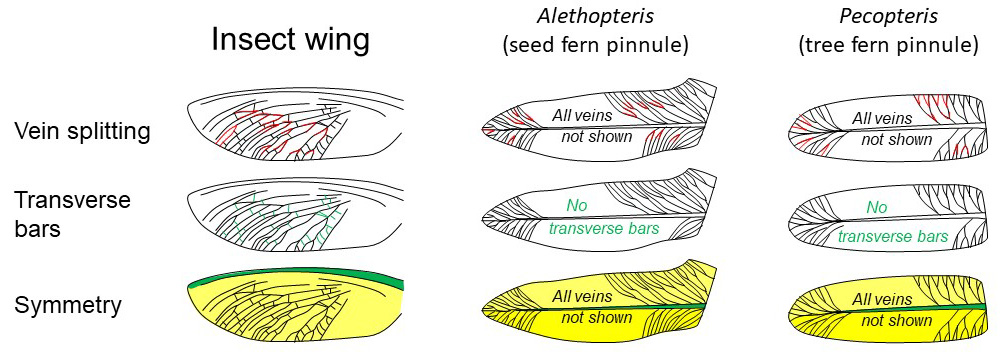Fossil of the Month from the KGS collection: Sheltoweeptera redbirdi

This specimen is the only fossil insect wing ever found in Kentucky. Insects are extremely rare fossils. This fossil wing is 2.2 inches long and 0.6 inch wide. If you look closely at the fossil, you can see patches of darker and lighter shading on the wing. These patches may represent preservation of the original shading or color patterns on the wings. The fossil was found in siltstones above the Whitesburg coal zone, Hyden Formation, Breathitt Group, in Clay County. The Whitesburg coal bed is Middle Pennsylvanian (Atokan, Duckmantian) in age, and occurs beneath the Fire Clay coal bed. The Fire Clay coal bed has been radiometrically dated at 314.6 ±0.09 million years old (Outerbridge and Lyons, 2006), so the fossil is approximately 315 million years old.

Many amateur collectors and enthusiasts find fern and tree-fern fossils, which they think are insect wings. Insect wings are extremely rare, however, and have distinctly different patterns in their wings than ferns and tree-fern pinnules (small “leaves”). At first glance, they can look similar. Smaller veins in insect wings and some fern and tree-fern pinnules may split or bifurcate. Plant leaves, however, tend to have a thick mid-vein and insects wings don’t. The thickest vein-like support structure is an insect’s wing is on one side of the wing (making it more aerodynamic). Smaller veins in insect wings, also have transverse veins or support structures that create many smaller polygons, which are lacking in ferns and other fossil leaves. Details of the fossil wing pattern are shown and discussed in papers by Chesnut (1981) and Brauckmann and others (1993).
The eastern Kentucky fossil was used to define a new species and genera of Pennsylvanian insect, Sheltoweeptera redbirdi (Brauckmann and others, 1993). The genus name is from the Shawnee name for Daniel Boone, “Sheltowee.” The species was named for the Red Bird District of the Daniel Boone National Forest.

Details of the vein pattern in the wing of Sheltoweeptera redbirdi are similar to those of wings found in the Spilapteridae family of flying insects, which belonged to the extinct order Palaeodictyoptera. More complete fossils of insects in this family have been found in other areas. Spilapterid insects were small flying insects that had two sets of wings that apparently could not be folded across their body when resting. Some had a paired tail (cerci) extending back behind their abdomen, similar to modern mayflies (Brauckmann and others, 1993). With a wing length of 2.2 inches, the eastern Kentucky insect’s body may have been 2.4 to 2.8 inches long, with a mayfly-like tail extending back another 2.4 to 2.8 inches. That’s a good size flying insect, similar in size to many modern dragonflies. The eastern Kentucky specimen is the oldest example of spilapterid insects in North America.
References
- Brauckmann, C., Chesnut, D.R., Jr., and Jennings, J.R., 1993, New spilapterid insect from the Breathitt Formation (Middle Pennsylvanian, Westphalian B) of eastern Kentucky: Neues Jahrbuch fur Geologie und Palaontologie, v. 11, p. 641–647.
- Chesnut, D.R., 1981, Insect wing from Road Gap, in Cobb, J.C., Chesnut, D.R., Hester, N.C., and Hower, J.C., eds., Coal and coal-bearing rocks of eastern Kentucky (Geological Society of America Coal Division Field Trip, Nov. 5–8, 1981): Kentucky Geological Survey, ser. 11, p. 71.
- Outerbridge, W.F., and Lyons, P.C., 2006, An absolute time table for the Lower to Middle Pennsylvanian Breathitt Group of Kentucky [abs.]: Geological Society of America Abstracts with Programs, v. 38, no. 7, p. 116.
View all archived fossils of the month from KGS collection

